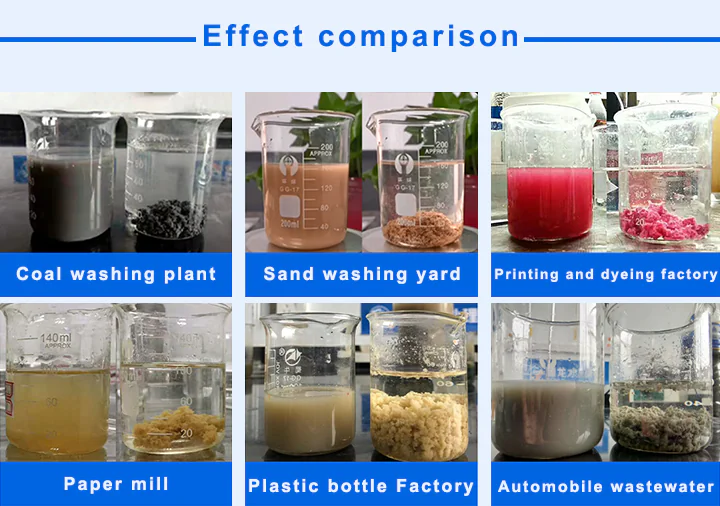How to Master PAC & PAM Dosing for Cleaner, Cost‑Effective Wastewater Treatment?In this hands‑on mini‑experiment, you’ll learn how to pinpoint the perfect dosing, so you can get maximize result and with the minumum cost.
What You’ll Need
- PAC solution: 5 g PAC in 100 mL tap water
- PAM solution: 0.1 g PAM in 100 mL tap water
- Two beakers, a glass rod, a test tube, and a pH meter (or pH strips)
Quick Prep
- Mix PAC
- Pour 100 mL tap water into a beaker.
- Add 5 g solid PAC and stir until it dissolves.
- Mix PAM
- In a second beaker, combine 100 mL tap water with 0.1 g solid PAM.
- Stir continuously for about 50 minutes until fully dissolves.
Treating Your Water Sample
- Prepare wastewater sample & adjust pH
- Take 100 mL of wastewater you want to treat and put it into a clean beaker.
- Measure wastewater pH and adjust it to neutrally (6.5–7.5).
- Add PAC
- Use a test tube to draw a few milliliters of the PAC solution (adjust the amount based on your water sample).
- Pour it into the beaker and stir gently with a glass rod for few seconds. You should find small floc particles forming.
- Add PAM
- Add 0.1–3 mL of PAM solution (more if it’s very turbid).
- Stir slowly—you’ll see large flocs forming, and the solid particles will separate from the clean water.

Troubleshooting Tips
- Flocs too small or faint? You probably added too little PAM. Try adding a bit more.
- Stringy “hairy” flocs? That means there’s too much PAM. Cut back the dose next time.
- Water still looks murky? You may need to increase the PAC dosage.
- Flocs float and won’t settle? You’ve added too much PAC. Try lowering the amount.
That’s it—super simple, yet super effective. You’ll clearly see how PAC and PAM work together to clarify water. If you want to purchase PAC/PAM or need a tailored treatment plan, reach out to us anytime. We’re here to help you achieve clean results with minimal cost.
